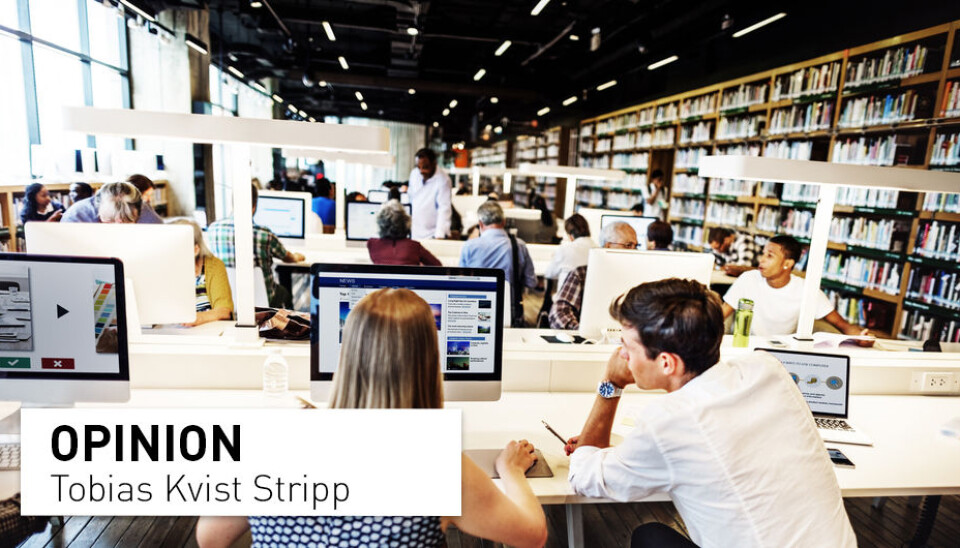Researchers' Zone:

Research and social media:
A dangerous cocktail or a winged messenger?
OPINION: Social media plays a huge part in the process of scientific publication. Is this a good or a bad thing? How do we ensure, that science stays trustworthy under the influence of social media?
Research is usually considered trustworthy. Many would probably argue that research published in scientific papers is as close as we can get to truthful knowledge about the world.
We usually do not consider ‘fake news’ to be a problem to the scientific community. In research, findings about the world are primarily reported through scientific papers which undergo peer-review processes to ensure trustworthiness and credibility of said findings.
While scientific publishing is a rather slow process, social media platforms operate with blazing speed in comparison.
And while both arenas can be used to disseminate knowledge, different rules apply to each. As scientific papers are increasingly also being disseminated through social media platforms, the distribution and reach of research is to some extent put in the hands of tech giants and social media algorithms.
The implications of this mix of science and social media is the subject of discussion in this article. Should we be worried when we share scientific papers on social media, knowing that the distribution and reach on those platform are orchestrated by algorithms responsible for e.g. echo chambers?
Or is the speed and reach of social media platforms simply a gift for knowledge-sharing that researchers should exploit?
While this article does not necessarily provide the answers to these questions, I propose that it would be relevant and timely for the scientific community to consider and discuss these issues.
The new possibilities in the information society
Much media attention has been given during the last couple of years, regarding social media corporations and tech giants’ power to influence people and behavior. The 2020 docudrama ‘The Social Dilemma’ encapsulates this.
While not only hampering with people’s behavior through conscious exploitation of psychological mechanisms, these systems seems to have the power to influence global political and economic tendencies and phenomena.
An example of this was seen recently when Twitter decided to shut down ex-president Donald Trump’s account in the wake of the insurrection on Capitol Hill.
However, the information society that we all inhabit today, also grants us possibilities that were unheard of just some years ago.
You can order means of transportation in mere minutes, you can discover hidden culinary gems within just a few blocks of your geographical position or you can find the latest research results from any discipline you like by a flicker of your finger.
‘If you’re not paying for the product; you are the product’
Most online services are free of charge. That is because the coin of the digital realm is typically not money but data.
Many large tech companies are built around a business model in which enormous computers with unprecedented computable powers gathers large amounts of data on users, which in turn feeds complex algorithms so they can deliver tailored and personal advertisements to these users.
You pay, so to say, for the online free content with the data that your online behavior generates; which site you visited, how many seconds you looked at a certain image, which buttons you clicked etc.
As the saying goes: ‘If you’re not paying for the product; you are the product’.
Can echo chambers hamper research’s trustworthiness?
The algorithms are rewarded for providing content to users, which foster more screen-time since this process feeds the computer more data to refine the algorithm.
One of the most powerful ways people are nudged to stay online and feed more data is by presenting content e.g. information, products etc. that the user is already interested in.
This potentially leads to these self-enhancing systems where opinions and beliefs are amplified by repetition and insulated from rebuttal – so called ‘echo chambers’. Echo chambers has been studied mainly in relation to social and political issues with e.g. fake news.
The question in this context is if echo chambers can hamper research’s trustworthiness? It sure has the potential for generating global confirmation bias.
Is science and social media a dangerous cocktail?
On social media individual agents (users) are acting as both authors, editors and reviewers of their own publications e.g. social media content.
This stands in stark contrast to much slower scientific publications where a paper is submitted by a researcher, considered for publishing by a journal editor and then peer-reviewed by other researchers.
Due to this thorough process which aims at securing high quality, the content of scientific papers is in great extent regarded as ‘truthful’ and objective.
This said without touching upon predatory journals, bad peer-review, research misconduct or questionable research practice which also plays a role in the scientific community.
Research is primarily published in scientific papers and then disseminated through social media. But which implications does it have for science and researchers when the content of science is mixed with social media?
Many publishers, universities and funding agencies now require or recommends authors to bring awareness to their research through social media platforms.
This focus on dissemination through various canals has led to alternatives to the disputed ‘journal impact factor’(JIF) such as ‘Altmetrics’. ‘Altmetrics’ evaluates the impact and reach of an author or paper through an accumulated score based on various proxies on different platforms, e.g. paper citations, mass media coverage or social media shares.
While ‘Altmetrics’ may provide a far better estimate of the reach and impact of a researcher or paper than the JIF, it also forces researchers into disseminating their research on different platforms in order to stand out and be successful.
Thus, researchers are now pushed to manage social media presence ‘on the side’ and with no proper training to do so – a task most companies have allocated trained full-time staff to manage.
Consequently, we are pushing science and research into social media, i.e. platforms driven by capitalistic algorithms and where phenomena like echo chambers are prevalent.
Social media gets our research to the people
Using social media to disseminate high-quality research to a very large global audience extremely fast is tremendously valuable. In this respect, social media platforms may serve as winged messengers for impactful and important research.
Research is conducted, at least partly, to help people. And these people, or end users, are using social media platforms to a large extend. So, if we want research to benefit people, it is only natural that we also want to spread new research results on the platforms, where these people are.
Nevertheless, there is a dilemma here: How can we ensure that science and research stay trustworthy and sound if we disseminate on platforms which algorithms do not spread content equally and freely, but based on users’ previous worldviews and behaviors?
The giants are getting ever more powerful
The global scientific community is quite prolific with an estimated 114 million scientific papers accessible on the web, increased number of publications each year and thousands of researchers who publish a paper each five days.
The scientific community has debated whether this high production, under the phrase ‘publish or perish’, decreases quality.
An example of such decrease is the conduct of ‘salami-slicing’ i.e. to report few results in many papers instead of accumulating them in one very rich paper, in order to maximize paper output.
The point that is presented here is simply that the increased amount of papers published may contribute to heterogenicity in quality and content. And when shared on social media platforms, where the reach is biased by algorithms not designed for knowledge-dissemination, it might get easier to find citable sources for any given statement supporting your own view (i.e. echo-chambers) – further hampering trustworthiness.
Some scientific publishing houses are also getting extremely big and powerful. For instance, Elsevier published more than 496,000 articles in 2,500 journals in 2019, contributing 18 percent of the global research output that year.
One could wonder if we are rendering too much impact in too few hands?
What would happen if for instance Elsevier or some of the large social media platforms were to consider a certain aspect of truth more favorable than another and start distributing this truth more intensely and prioritized?
Some of these corporations certainly would have the power to influence the knowledge discourse globally – and are perhaps doing so already.
Where do we go from here?
There is no easy answer to this question. As scientists, we are in a favorable position: People generally trust us and our research.
On the other hand, great responsibility comes with this trust, and we should seek to ensure that the knowledge we generate is not misused or misinterpreted. Research dissemination on social media is most likely here to stay – researchers, publishers, institutions, and the public alike seems to gain much from this partnership.
For this very reason, we need to start a discussion on how we can ensure that science and dissemination stays trustworthy and unbiased as the relationship between research and social media becomes ever more symbiotic.
And while this symbiosis may very well be the (necessary) way forward, I propose that researchers should pay more attention to and learn more about the inner workings of the systems they use to disseminate their knowledge, before uncritically succumbing to them.
How do we avoid that science and research results become as contested as say the news in the US? The scientific community will have to consider how best to adapt and utilize the tools that are becoming available in this increasingly digital and data-driven world.
If not taken seriously these issues may compromise the goals and ideals of science with huge implications for every aspect of society where knowledge is used and needed.
Read the Danish version at Videnskab.dk's Forskerzonen.






